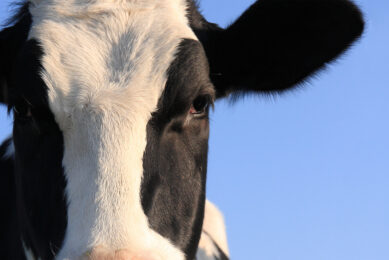Genotypes and its effect on calving

One of the sessions at the EAAP 2016 conference in Belfast looked into whether suckler cow genotypes have much of an influence at calving times.
Dr Denise Lowe from AFBI detailed the aim of a three-year long study which compared two suckler cow genotypes, namely Limousin × Holstein (LH) and the Stabiliser composite breed, in terms of performance at calving.
Both dam genotypes were bred to a Stabiliser sire and at calving time, cows were scored for calving difficulty, cow temperament, mothering ability and milk supply. In addition, a sample of colostrum was collected as soon after birth as possible in years one and two and analysed for milk composition.
The study found that there was no significant effect of dam genotype on concentrations of casein, lactose, protein or urea nitrogen in the colostrum.
However, colostrum from LH dams had a numerically higher fat concentration in both years but it only approached significance in year two.
Average concentrations of 13.1g/kg were recorded in the Stabiliser breed and 48.8g/kg in the Limousin Holstein cross. The study also found that dam genotype had no significant effect on incidence of calving difficulty. There was no significant effect of dam genotype on cow temperament scores in year one and two, but Stabiliser cows tended to have a better temperament score in year three than LH cows.
When the three years of data was combined, dam genotype had no significant effect on cow temperament or mothering ability scores. There was also no significant effect of dam genotype on the vitality score of the calves.
There was a trend of a higher proportion of LH cows having plentiful supply of milk compared to S cows when the three years of data were combined.
The EAAP conference was held from 29 August – 2 Sept.
Join 13,000+ subscribers
Subscribe to our newsletter to stay updated about all the need-to-know content in the dairy sector, two times a week.











